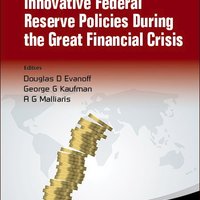Innovative Federal Reserve Policies During the Great Financial Crisis
Item
Title
Innovative Federal Reserve Policies During the Great Financial Crisis
List of Authors
Douglas D Evanoff; George G Kaufman; and A G Malliaris
Abstract
This book, Innovative Federal Policies During the Great Financial Crisis, contains discussions of unconventional monetary policies, policy changes to address systemic and payments systems risks, new macroprudential policies, the 'stretching' of the financial safety net, changes in the Fed's liquidity funding facility (the discount window), use of the Fed's balance sheet as a tool of monetary policy, and alternative means to deal with real-estate asset bubbles and potential financial instability. The 10 chapters in this book offer a unique analysis of several innovative approaches by the Federal Reserve that contributed to the stabilization of the US economy following the Great Recession. What unique policies were implemented? Toward what goal? Were they effective? Were there unintended consequences? Additionally, but less thoroughly, events in the Euro market are also discussed, and policies (and their impact) of the ECB are critiqued. Based on papers presented at the 91st Annual Conference of the Western Economic Association International Meetings in Portland, Oregon, 2016, Innovative Federal Policies During the Great Financial Crisis adds significantly to the debate over why innovative or unconventional policies were needed, how they were implemented and how effective they were.
Date
October 2018
Publication Title
World Scientific-Now Publishers Series in Business: Volume 15
Publisher
World Scientific
Identifier
ISBN: 978-981-3236-58-5
Bibliographic Citation
Innovative Federal Reserve Policies During the Great Financial Crisis. Douglas D Evanoff (Federal Reserve Bank of Chicago, USA), George G Kaufman (Loyola University Chicago, USA), and A G Malliaris (Loyola University Chicago, USA), World Scientific-Now Publishers Series in Business. October 2018
